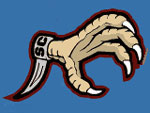 It appears Rico McWilliams is out for the season. McWilliams, a freshman from Hampton, GA, is the first casualty of fall practice. Hopefully he’ll be the last, but that’s not likely. The secondary is not an ideal place for injuries, which got me thinking. “Where can we least afford to lose players to injuries,” and conversely “Where can we?”
It appears Rico McWilliams is out for the season. McWilliams, a freshman from Hampton, GA, is the first casualty of fall practice. Hopefully he’ll be the last, but that’s not likely. The secondary is not an ideal place for injuries, which got me thinking. “Where can we least afford to lose players to injuries,” and conversely “Where can we?”
There are two factors to consider in how much an injury hurts a team. The first factor is depth. Depth at a position is the number of quality players available on the team. The second factor is VORP, or value over replacement player. The term is used in baseball statistics to quantify how much a player’s loss hurts. The idea is if there is a very good back up it doesn’t hurt as much. Given those parameters, here is how the positions look.
#8) Running Back
This position has our most dynamic player in Marcus Lattimore. That would tend to indicate his VORP is high, but we have a deep corps behind him, and because of last year’s injury, there are a pair of proven backs. Lattimore is clearly the starter and the star, but this position is probably the deepest on the team. After Lattimore, there is Kenny Miles, Brandon Wilds, Shon Carson and Mike Davis. In fact Marcus Lattimore hinted that this group may be as deep as LSU’s vaunted set of running backs.
Let’s continue….
#7) Tight End
We have two good starting tight ends, and we often only play with one in the game. The back-ups are projected to be very good as well. This is a deep, talented position that has been recruited well lately.
#6) Defensive Line
If Marcus Lattimore isn’t the biggest star on the team, Jadeveon Clowney is, which makes putting d-line a little odd here. However the depth is so great here, we could, if we had to, sustain an injury to this group without catastrophic circumstances. We can legitimately go 3 deep at most of these positions.
#5) Kicker and Punter
This is an area where the team isn’t that deep, but we don’t have any proven stars. So the VORP for the starters, whoever they may be, isn’t very high. Our back-ups here are about as good as the starters.
#4) Linebackers
This position is similar to #5 in that the starters are very similar to the first back-ups. A difference is that after the first 4 (remember we only play with 2 linebackers) there really isn’t anyone with any experience. We’d be hard pressed to do much of anything with significant injuries here.
#3) Offensive Line
There are a lot of bodies here, but there isn’t a lot of experience. O-line may be the position that requires the biggest adjustment from high school to college other than quarterback. Many of the players are talented, but they are young. Of the 13 listed on the depth chart, there are 3 seniors and a junior. Ten freshman and sophomores occupy the other slots. This position is vulnerable to injury.
#2) Quarterback
There are few injuries more terrifying for a fan than a quarterback injury. The position is so integral to the game that injuries here can be catastrophic, even for good teams with good QB depth. This year, we have an entrenched, undisputed starter. If he can’t stay healthy, we will be forced to play a true sophomore with little more than some mop up duty experience. That would be a blow to the season’s expectations.
#1) Secondary
This is where we’ve had our first injury, and this is where we are most vulnerable. Our starting 5 (counting Spur) is excellent. There is talent behind them, but it is all unproven. If Holloman goes down in the first three games, we’ll have to shift Damario Jeffrey back from Will linebacker. Swearinger is backed up by two freshmen, and Brison Williams by another sophomore. Cornerback doesn’t have many proven players beyond the starters as well.
There’s no good place to have an injury, and coaches, Spurrier in particular, do as much as they can to minimize those injuries in practice. All a fan can do is hope for a healthy pre-season, but if an injury or two must occur, we know where we can and cannot absorb the loss.



















